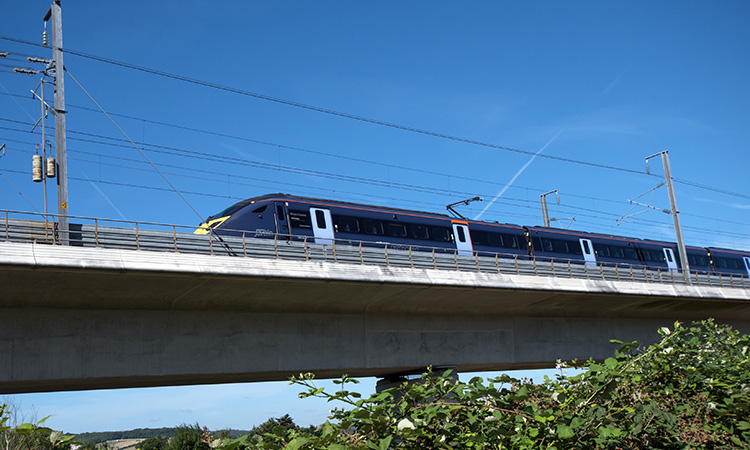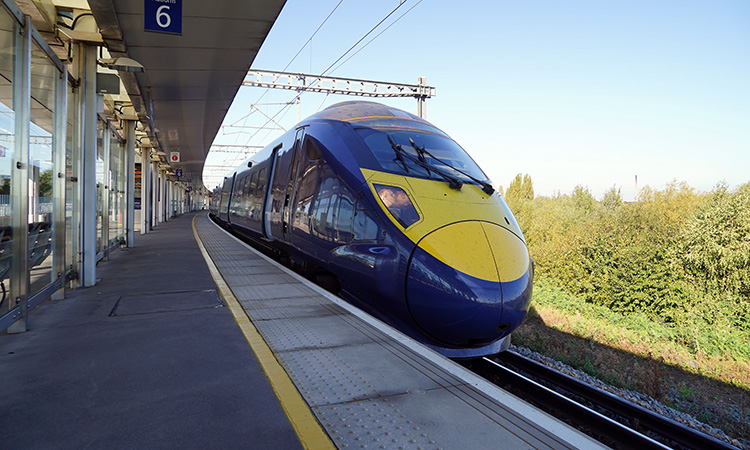The role of AI is crucial to more efficiently manage railways post-COVID-19
Posted: 26 March 2021 | Richard Thorp | No comments yet
Richard Thorp, Engineering Director at High Speed 1 (HS1) Ltd, writes how new technology, particularly artificial intelligence and digitalisation, is driving change in the rail sector as an operational aid to real-time decision making.


For centuries, the railways have been relied upon to carry millions of people and tonnes of goods from one destination to another. Its constancy means that, to the casual eye, it appears slow to evolve. But, over the years, significant technological innovation has made train travel one of the quickest, most efficient and greenest modes of transport. However, we nonetheless maintain our relentless desire to innovate and, as an industry, we are continuously looking at new ways to improve services, build better infrastructure and keep people safe.
Over the years, significant technological innovation has made train travel one of the quickest, most efficient and greenest modes of transport”
The railway industry has undoubtably been hit hard by the COVID-19 pandemic, with changing quarantine rules, restricted travel and a ‘stay at home’ strapline meaning that operators have significantly reduced services. Whilst the roadmap ahead is positive for getting the industry back on track, the down period for train travel has not all been doom and gloom. Rail operators and owners have used this time to think hard and creatively about how they use technology to improve the railways and ensure that it makes a bigger and better return post-COVID-19.
Adopting technology
Across the industry, we’ve already seen a lot of improvements thanks to new technology and digitalisation. This includes the adoption of artificial intelligence (AI) to improve infrastructure, the use of digital 3D modelling to help with refurbishment projects and the combination of different data sets to improve timetabling, delays and the general operation of the railway. As we celebrate the European Year of Rail in 2021, the industry must lead the way in achieving fast and efficient future mobility.
We have had to change the way in which we think about the application of new technologies and techniques, placing a real focus on the outcome to drive technology choice”
As the owner and operator of the UK’s only high-speed railway – one of the most exciting and innovative transport projects to take place in Europe – we at HS1 Ltd are constantly assessing how we can use technology to address real-time issues surrounding services and our infrastructure, whilst ensuring that we are doing this in a responsible and sustainable manner. We have, though, had to change the way in which we think about the application of new technologies and techniques, placing a real focus on the outcome to drive technology choice, as opposed to getting excited about a technology and then thinking about how we could use it. This has been achieved through using a structured approval process to challenge the reason for change and measuring the business impact. The outcomes that we are striving for will be recognised by other infrastructure owners, safety, whole life cost reduction, sustainability and customer experience.


Artificial intelligence (AI) and augmented reality (AR)
This change in thought process has started to bring about the implementation of some really exciting projects that will change the way in which we maintain and renew our assets. A good example is the use of AI to help us to manage the condition of our 25km of tunnels. The technology will help maintenance teams to detect defects on our infrastructure, allowing the team to act quickly on these defects, monitor their condition and prioritise repairs. This is a far more time-efficient and safer way of managing the tunnels, as defects will be accurately located with the help of augmented reality (AR), and it will remove subjectivity on the severity of the defect, leading to a reduced number of visits to the asset for initial inspection.
Defects will be accurately located with the help of augmented reality”
We are applying this process to the whole HS1 system and, earlier in 2021, we developed a project funded by Innovate UK and in partnership with PAULEY Group Limited, Network Rail (High Speed) Limited, Athonet UK Limited and the University of Sheffield Advanced Manufacturing Research Centre (AMRC). The project brings together sensor technology, AR, a private 5G network, AI and, importantly, operator/maintainer input to unlock the potential industry benefits.
Sensors have been placed on several key parts of our system, including on lifts and escalators in our stations and on points systems on our rail infrastructure. They will provide critical operational data, which will help to monitor the performance of the assets. Not only will we be able to assess any faults remotely, meaning that we can avoid sending out maintenance crews for initial inspection, we are able to dispatch repair teams far quicker than ever before. This will not only save time and money, but will ultimately improve delays to services due to infrastructure issues and ensure the safety of repair teams by needing less time spent on the tracks.
Linking our rail assets and station assets on one platform will start to bring the management of the whole HS1 system together – this is the real game changer”
The application of the technology is all important, though, and linking our rail assets and station assets on one platform will start to bring the management of the whole HS1 system together – this is the real game changer.
The consistent flow of data and information between onsite and remote maintenance teams will enable both parties to make better informed decisions. Through this sharing of data, HS1 Ltd can develop its knowledge and understand further new maintenance methods to better train new and existing staff.
Augmented reality is often pitched as a training aid, but it can be so much more. It needs to be used as an operational aid for real-time decision making, bringing together multiple information sources to assist our control and maintenance staff. This can only be done by bringing the front-line teams in early in the development cycle and interpreting their requirements to deliver a system that is more user friendly than their legacy approach. Many technologies have failed when it is easier for the technician to use paper drawings, data sets, standards and experience to make decisions, rather than use the new tech. Usability is essential.
Sustainability
Another key driver for us is the focus on our sustainability strategy. International high-speed rail already saves the equivalent CO2 emissions of 60,000 flights per year. To maintain and improve this, we must provide a passenger experience that encourages travellers to become repeat users of the service and encourage the modal shift to rail. This will only happen if we have a system that enables travel through our stations to be an enjoyable experience, and travel on our route infrastructure that is outstanding.
The pressures that COVID-19 has, and will continue to, put on the industry will drive the need for systems to re-think safety, efficiency and cater for changing customer needs”
The railway has long been good at understanding individual assets, building on the way that we maintain them to improve safety and performance. The pressures that COVID-19 has, and will continue to, put on the industry will drive the need for systems to re-think safety, efficiency and cater for changing customer needs. This is why we have grasped the technology and are really challenging the way in which we deliver our innovation. We are undertaking traditional research and development (R&D), which is looking at longer-term opportunities to address future challenges, whilst continuing to apply emerging technologies and innovation to drive short- to medium-term operations and maintenance issues. I’m also pleased to say that our project aims to support the UK government’s National Digital Twin programme (NDTp), led by the Centre for Digital Built Britain, which will help us to share our experiences.
Leading the way
If this type of technology is adopted by the wider rail industry, the benefits will be huge. It will help to rebuild networks that have been disrupted by COVID-19 and keep rail workers safe, whilst carrying out works at a social distance for the foreseeable future. It could also improve productivity across teams and cut costs at more than 3,000 UK railway stations. We must collaborate and share our experiences so that the industry as a whole benefits from projects, such as the one that we are carrying out.
I’m proud that HS1 is leading the way in developing and applying new technology and using the current crisis that the pandemic has brought on our industry to drive change. The support that we have received through Innovate UK and our other partners has enabled this to happen and shows that the high-speed rail system, as the Green Gateway to Europe, can deliver a real return for the country far beyond the COVID-19 crisis.
Richard Thorp has over 20 years’ experience in developing asset management capabilities for both UK mainline and high-speed railways. As a chartered engineer, he is responsible for providing client leadership to HS1’s supply chain, fulfilling the Asset Stewardship objectives in the concession agreement and ensuring that HS1 Ltd continues to protect, enhance and grow the asset. Richard also serves as a Director of the High Speed Rail Group.
Related topics
Artificial Intelligence (AI), Augmented Reality (AR), Digitalisation, High-Speed Rail, Infrastructure Developments, Operational Performance, Safety, Sustainability/Decarbonisation, Technology & Software, The Workforce, Track/Infrastructure Maintenance & Engineering
Related organisations
Athonet UK Limited, High Speed 1 (HS1 Ltd), Innovate UK, Network Rail (High Speed) Limited, PAULEY Group Limited, University of Sheffield Advanced Manufacturing Research Centre (AMRC)








